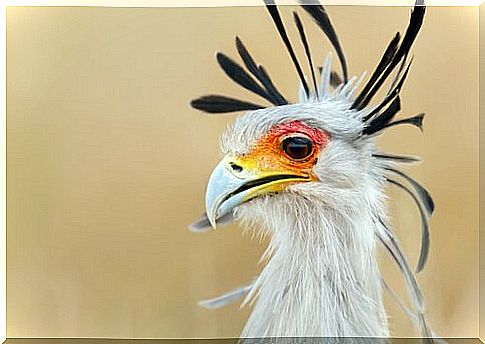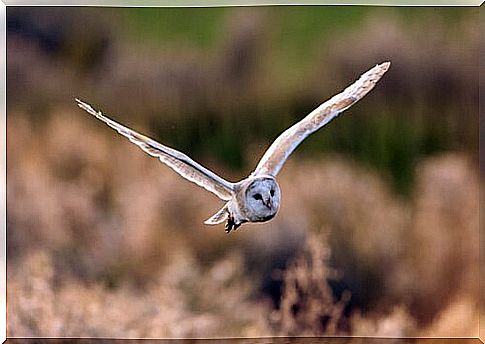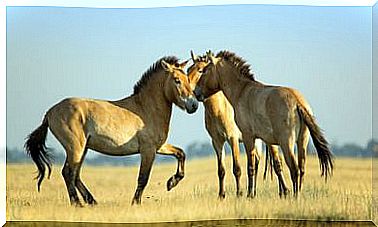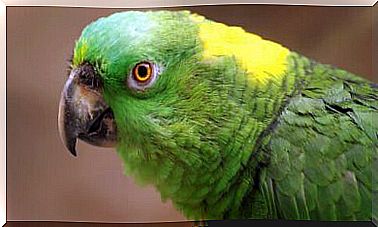What Are Birds Of Prey?

Birds of prey are among the most charismatic birds in the animal kingdom. It is not a true taxonomic group, rather it is a group of species that have in common the fact that they are carnivores. These birds have been used by man in falconry for centuries.
Common characteristics of birds of prey
Most of these birds possess a curved bill, which allows them to better tear meat and tendons from the bones of their prey. They also have strong claws, which allow them to catch their prey, launching at great swoop speed.
All species of birds of prey can take advantage of their incredible sight, the most developed in Nature. They have large eyes with which they can spot small prey, such as rodents, from miles away. Their strength is such that some species, such as the golden eagle, can even capture prey as large as lambs.
Nocturnal birds of prey
Among the nocturnal birds of prey we find owls and barn owls, also called Strigidae and Tytonidae , respectively. These birds are characterized by a centuries-old adaptation that has allowed them to improve their hearing and reduce the noise they make when they fly.
These animals love to move and live in the dark, in situations where hearing is more useful than sight. Thus, their muzzle is rounded and their beak is shorter. A particular shape of the head that allows you to better convey sounds, like a kind of parabola. This concave shape allows to concentrate every single noise, allowing these birds of prey to recognize the imperceptible movements of even the smallest prey.

All this without forgetting the particular structure of the feathers, an authentic work of natural engineering, which has even inspired aeronautical engineers. The wings of these birds have three tiers: a stiff feather stripe on the front, a flexible crest on the outside, and a velvety plumage on the top.
This makes the flight silent, giving these predatory predators an extra weapon to be able to hunt their prey. In addition, they have the ability to spot prey even under the snow, suddenly appearing and surprising rodents, small mammals, reptiles and insects.
Diurnal birds of prey
There are many species of diurnal raptors, the best known of them are eagles, because they are the largest hunters and have spread to almost all ecosystems on the planet. Among these, it is certainly worth mentioning the imperial eagle but also the buzzard, also very common in many countries, the gray eagle and the harpy eagle. These are some of the most striking raptors for their size and hunting techniques.
Hawks and kestrels are smaller, but they are also the fastest in the world. The peregrine falcon can reach 380 km / h. On the other hand, goshawks and sparrow hawks do not reach these speeds, but have a very agile and very maneuverable flight, which allows them to dodge any obstacle.

The serpentarium ( Sagittarius serpentarius , in the main photo) is the most surprising diurnal bird of prey, due to its plumage reminiscent of the American Indians and the fact that it is the only one that does not hunt from the air. It uses its long limbs to strike and capture prey. We can find it in many African ecosystems, mainly south of the Sahara.
Necrophagous raptors
These birds could be included among the diurnal raptors. We speak mainly of vultures, condors and urubus. They are actually very special birds. Although other birds of prey such as the kite can eat carrion, vultures and condors are true specialists in the consumption of animal remains. Despite having the size and strength to hunt alone, they hardly target live prey directly.
These birds are very heavy and among them the Andean condor ( Vultur gryphus ) stands out as the largest bird in the world. Speaking of records, it is worth mentioning the black vulture, which is the largest bird in Europe, very abundant in countries like Spain.
What is the role of birds of prey in Nature?
The existence of these birds of prey is seriously threatened by drugs such as diclofenac or toxic substances such as lead contained in hunters’ bullets. Protecting these birds is vital, as they play a vital role in the balance of ecosystems. For example, they limit the population of rodents and small mammals.
On the other hand, necrophagous raptors are essential to prevent the spread of diseases and the contamination of natural water sources. Indeed, the reduction of their population has unfortunately produced real humanitarian crises in countries like India. The presence of birds of prey is fundamental for man and, therefore, it is necessary to protect them in order to safeguard the balance of our planet.









